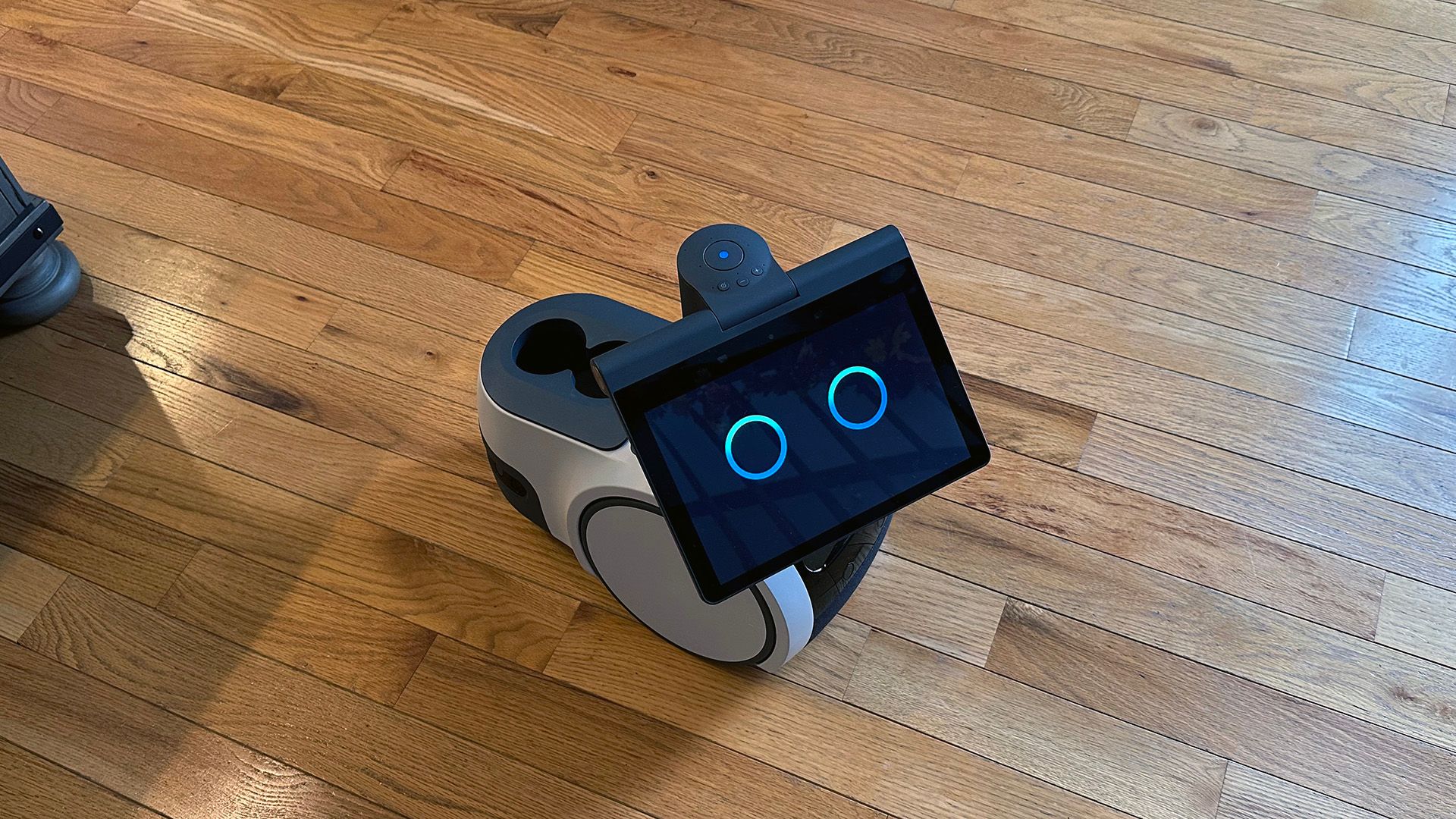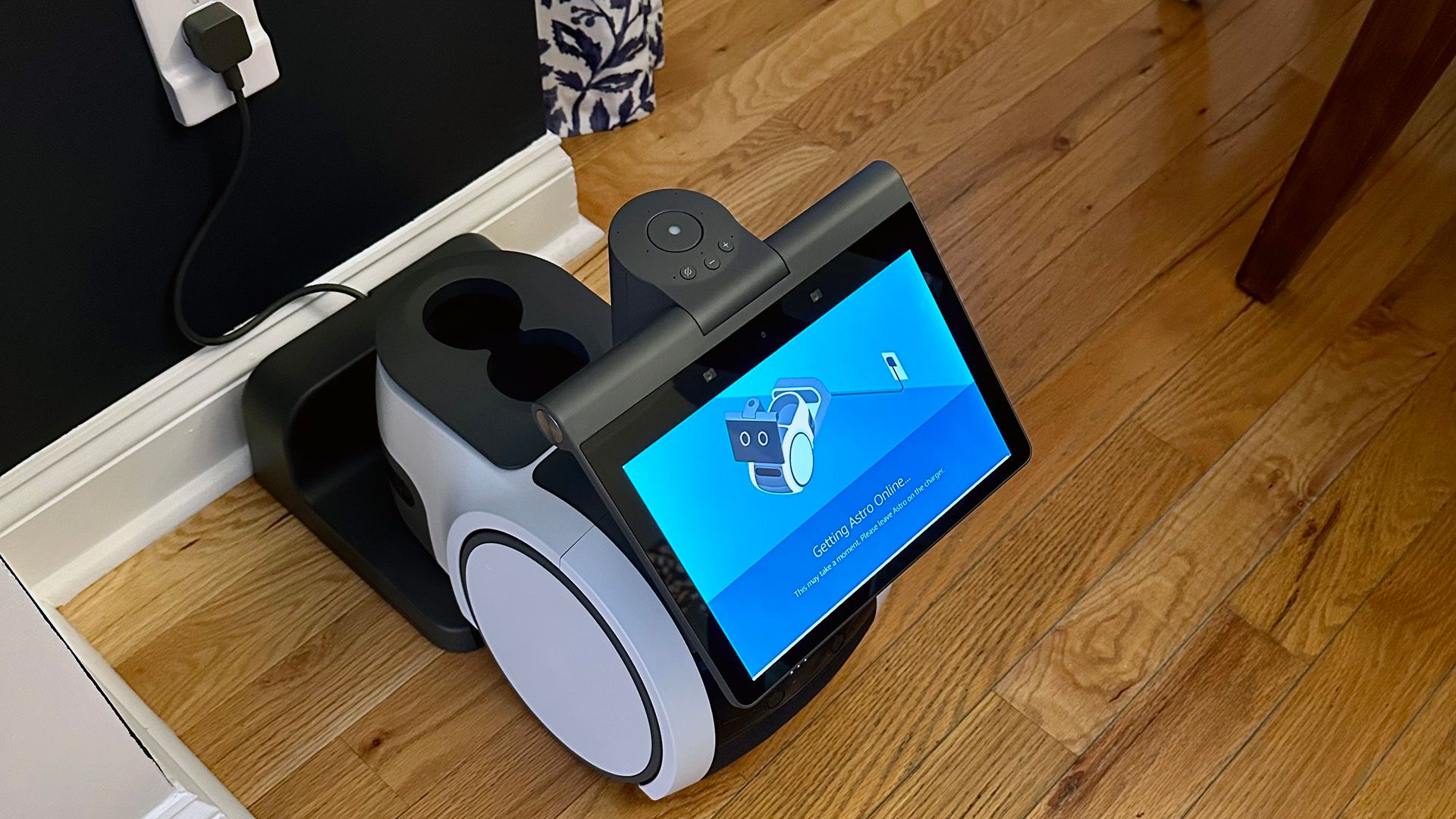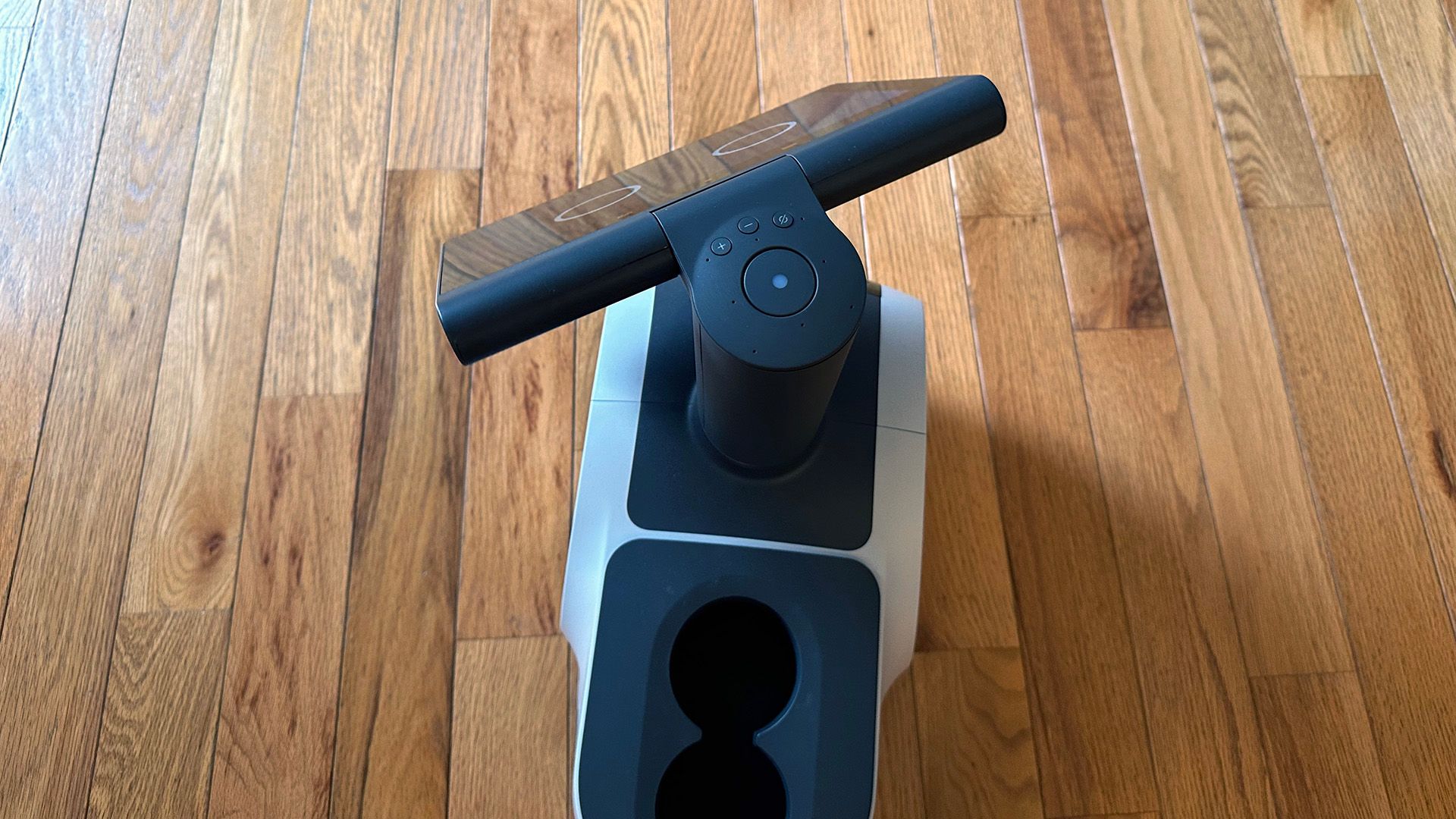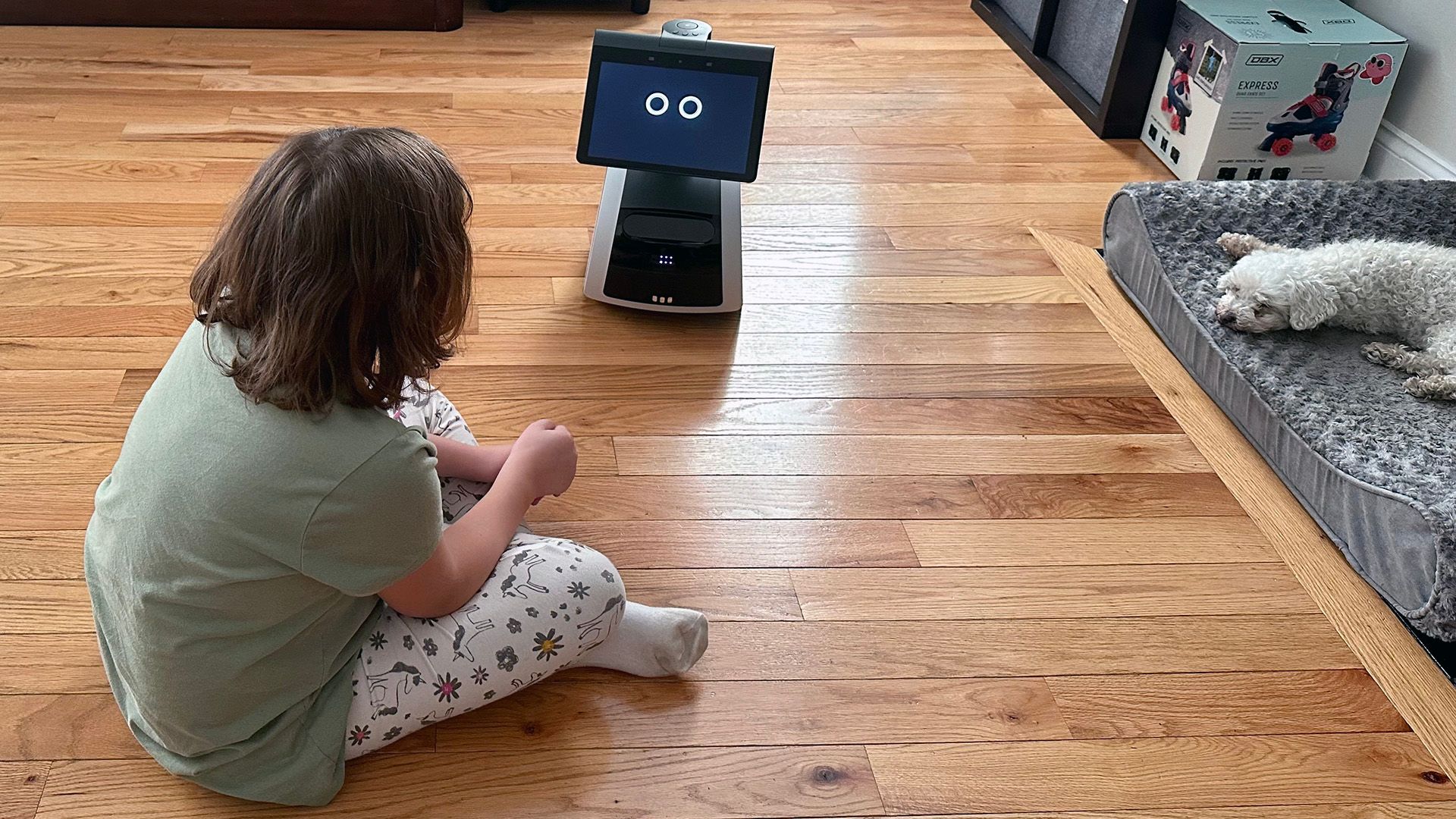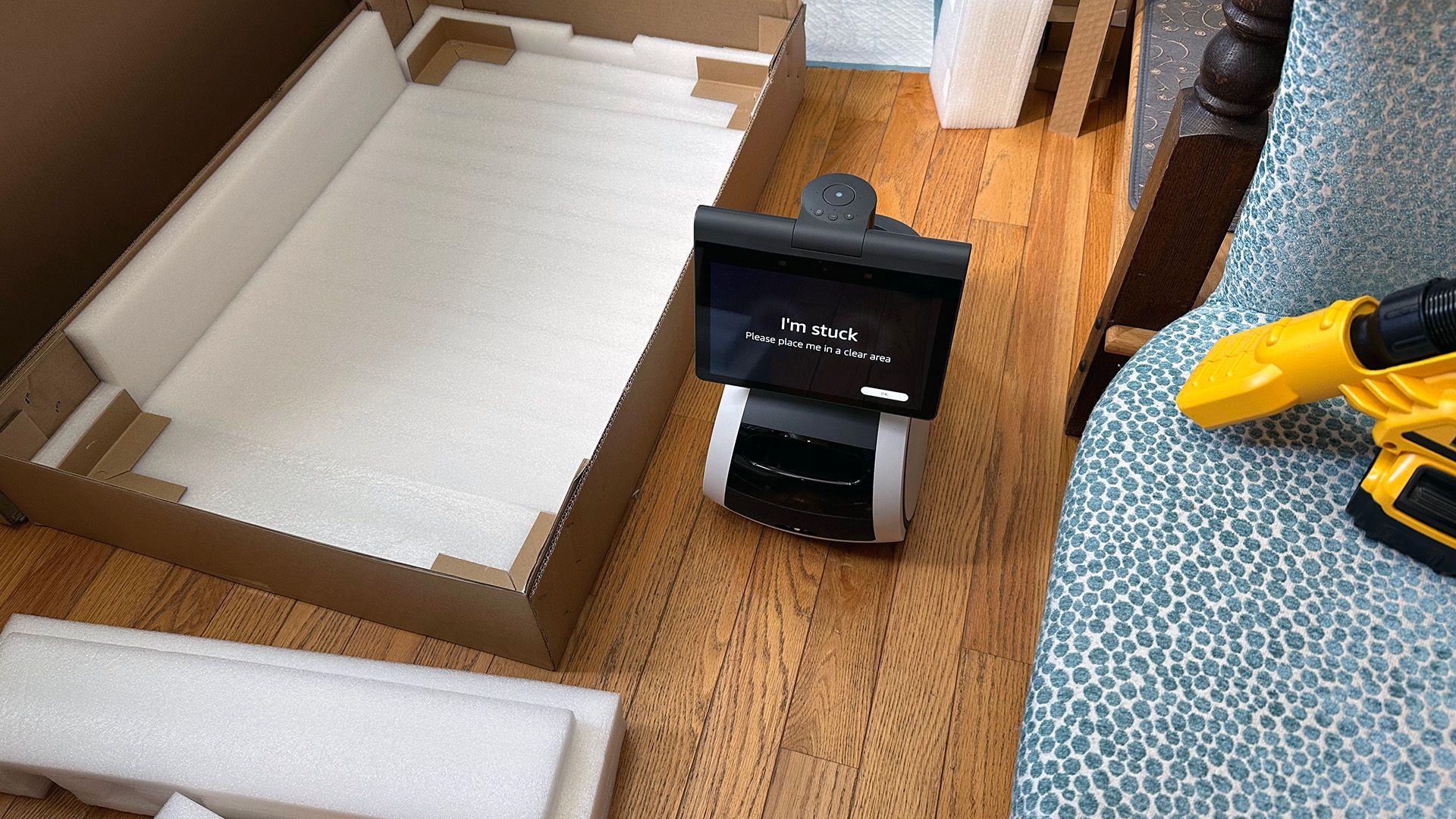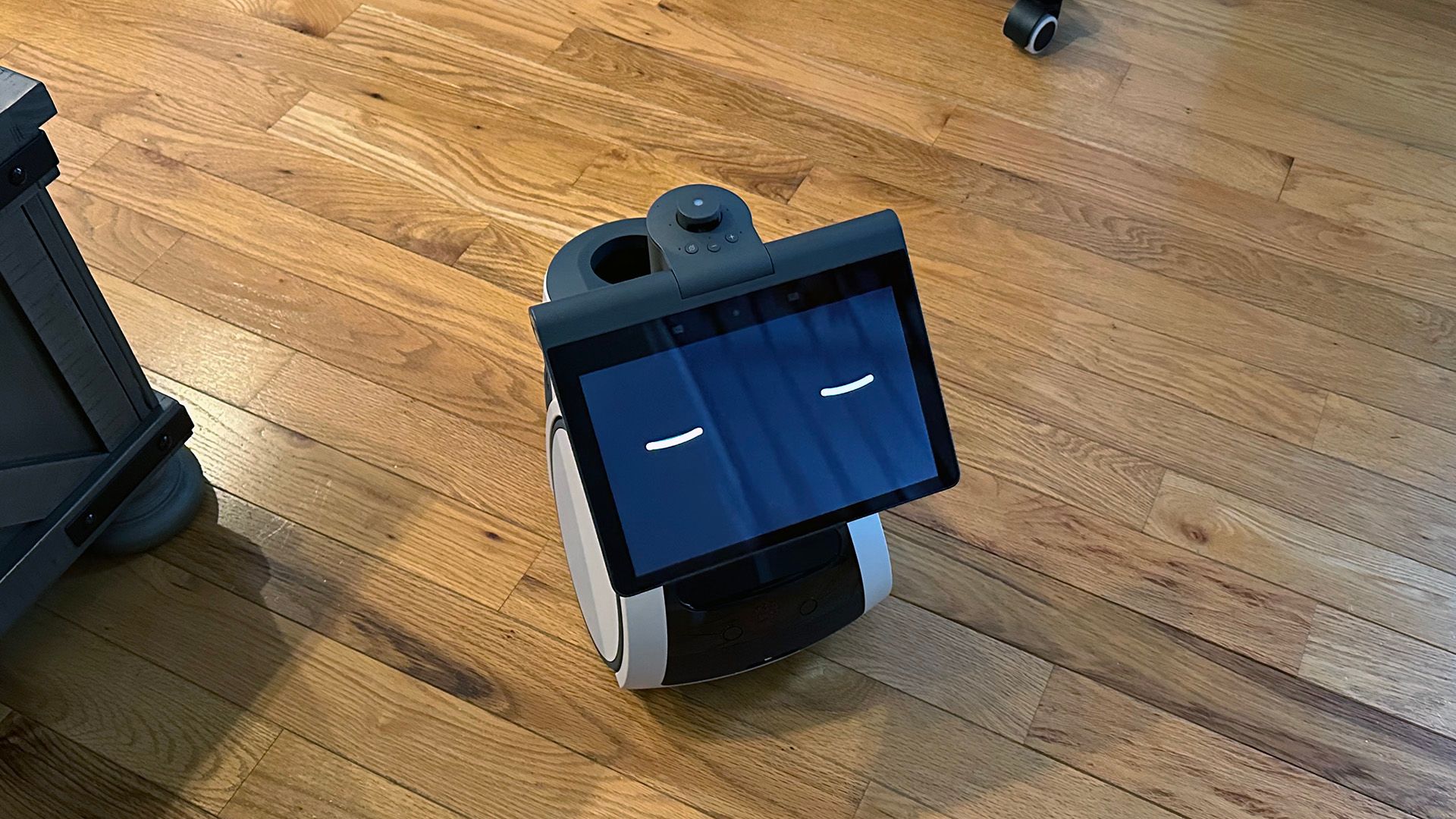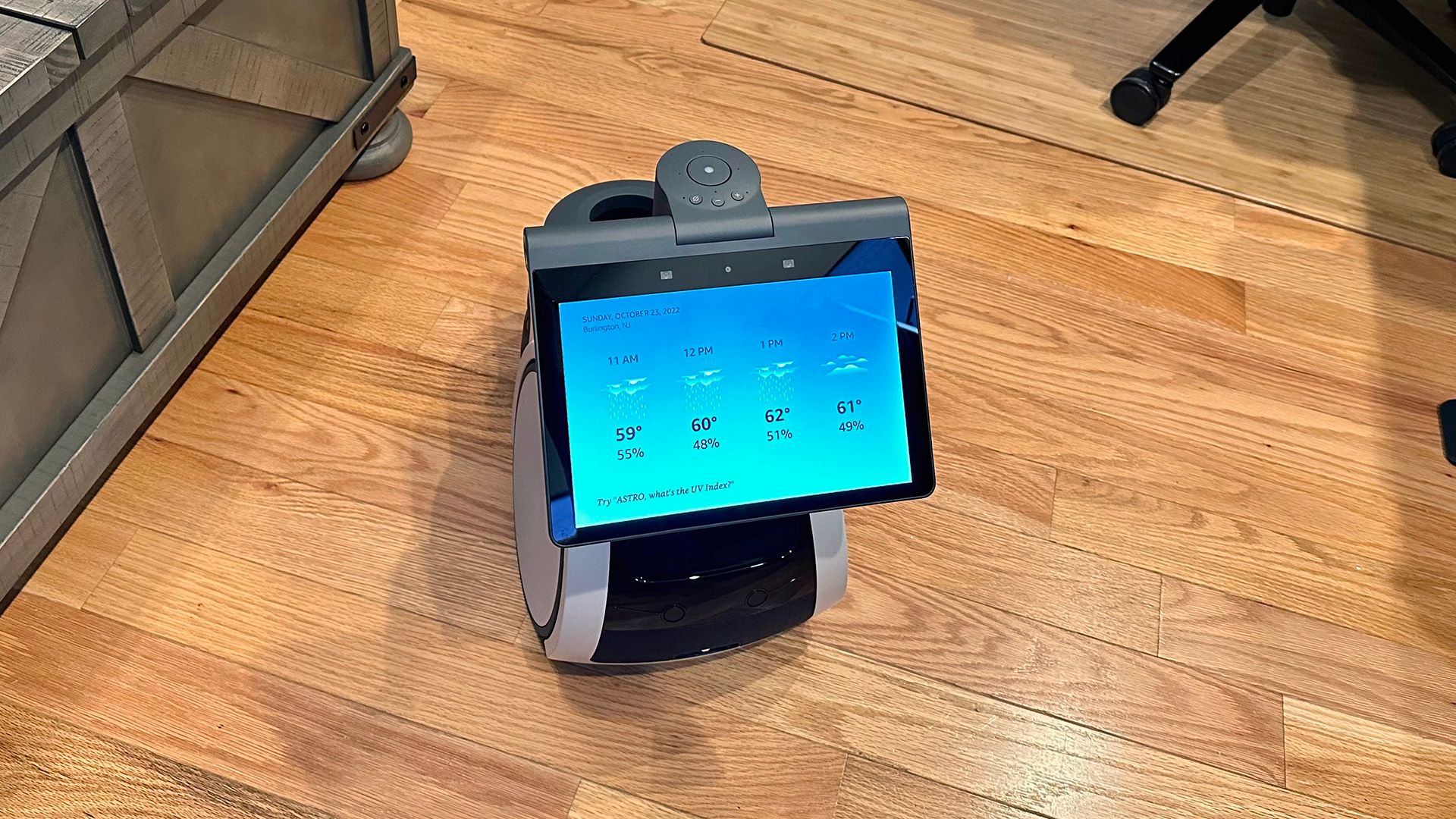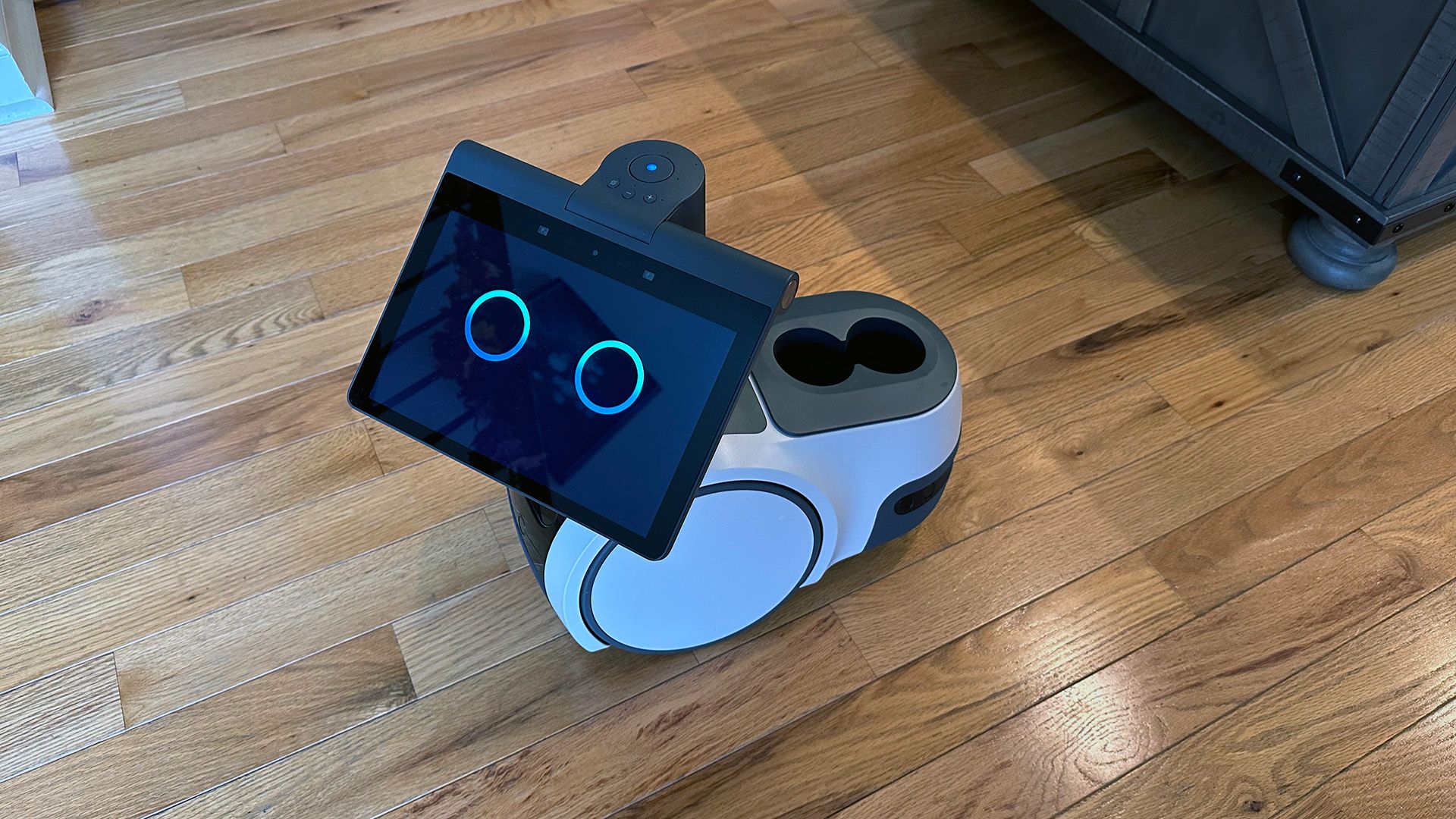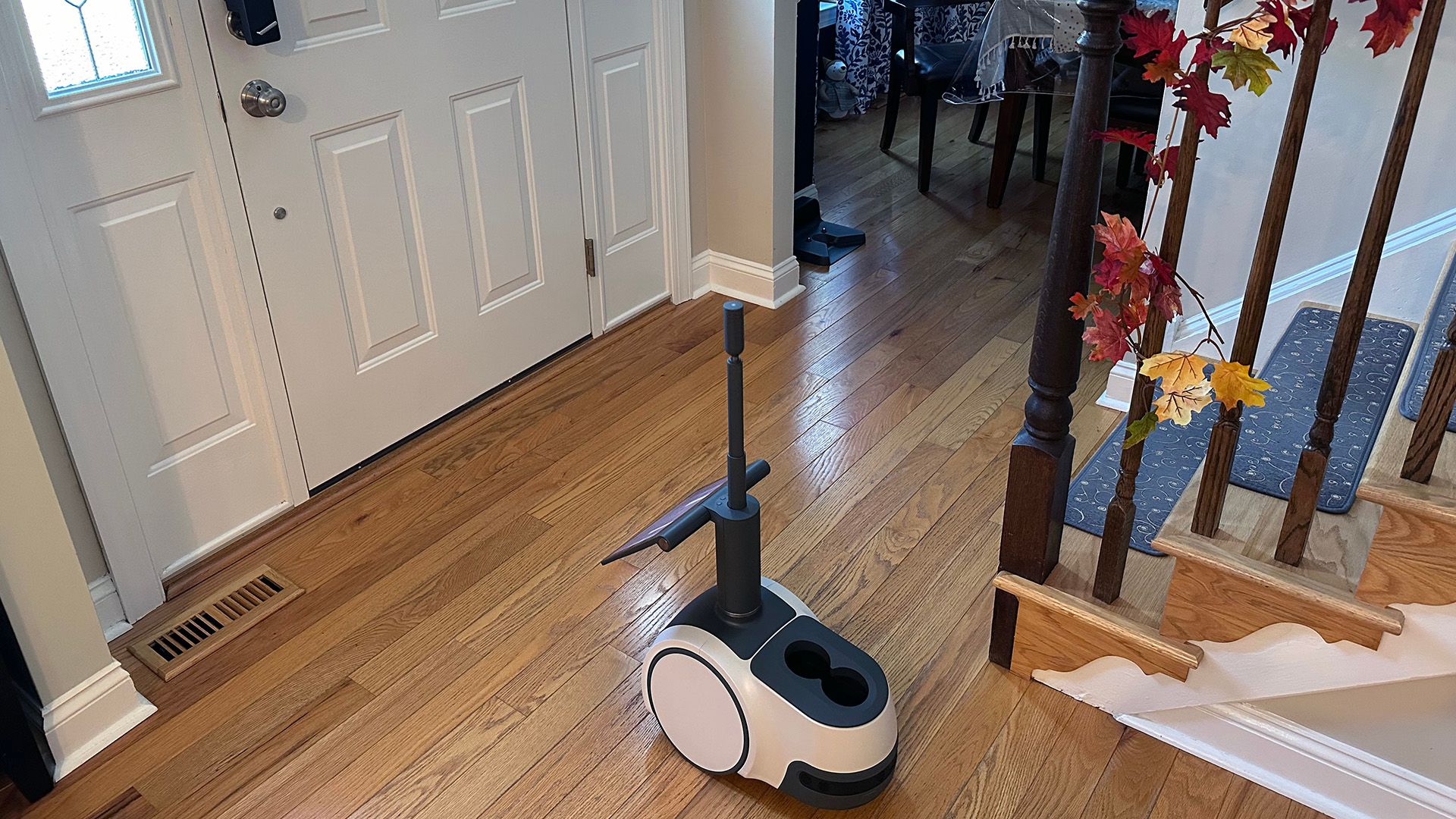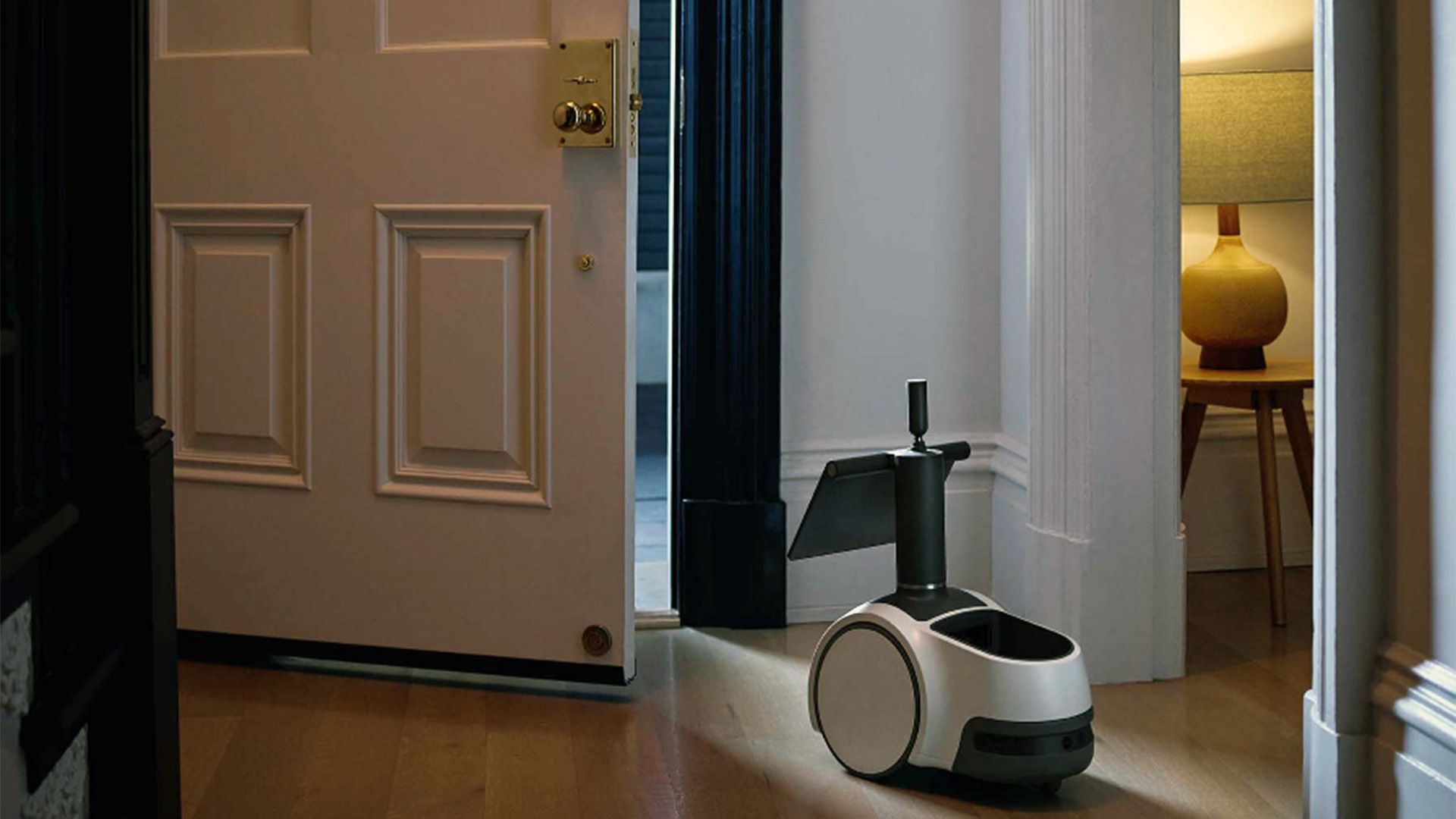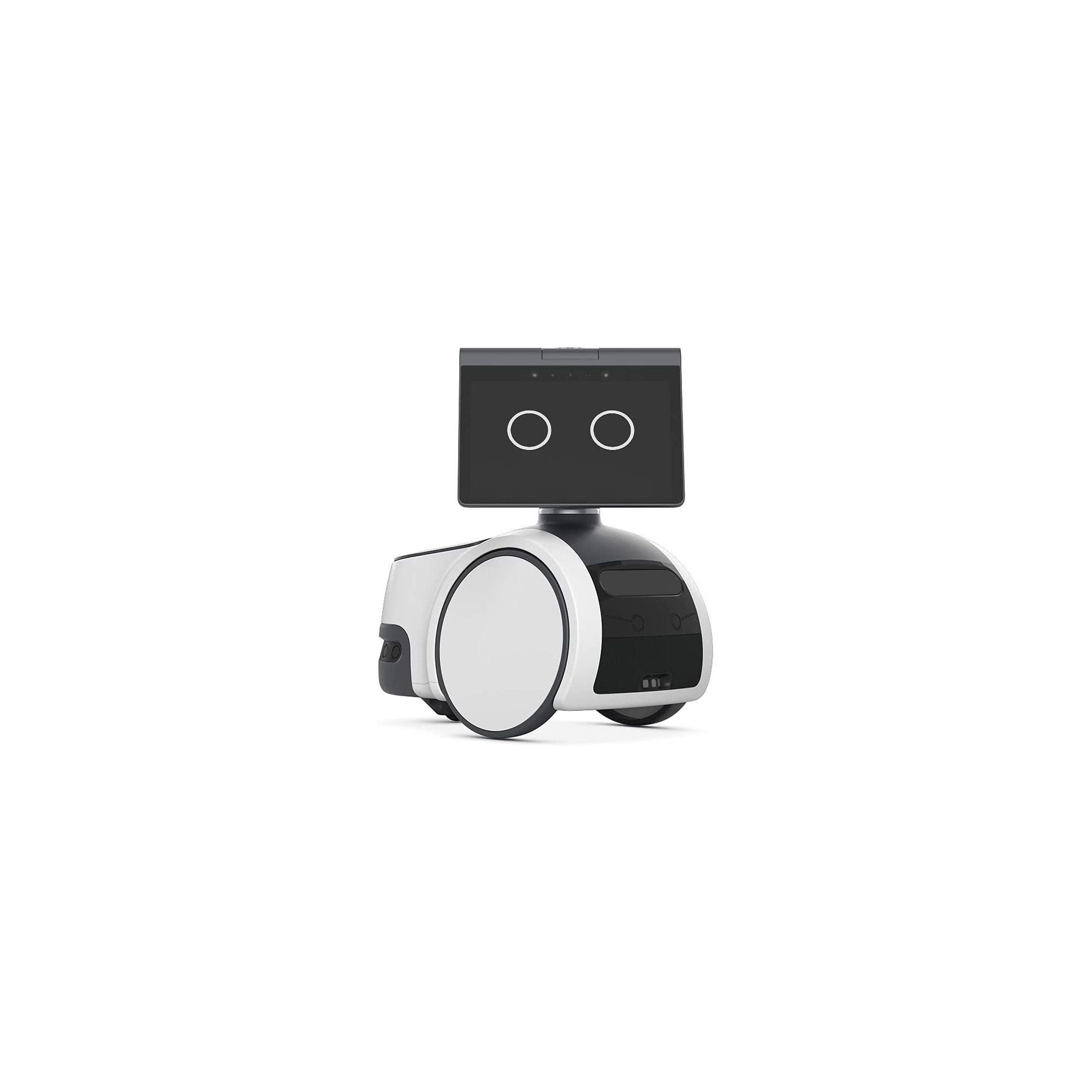Quick Links
Amazon Astro tries its best to be the first practical general-purpose personal robot. Unfortunately, outside of some specific use cases arguably better served by other devices, you'll likely struggle to find uses for it.
The idea of a personal robotics revolution was hyped as far back as the early 1980s. Unlike the personal computing revolution, however, the robot takeover proved to be a false start, at least outside of autonomous vacuums. Thanks to benefits that never extended beyond "fun toy," little headway has been made in personal robotics in the decades since.
Enter Amazon's Astro, which finally fulfills some of the potential that early personal robotics pioneers promised, but ironically still struggles a bit when it comes to compelling use cases.
Setup: You Have Some Work To Do
- Astro Dimensions: 16.7 x 9.8 x 17.3in (424 x 250 x 440mm)
- Charger Dimensions: 11.0 x 10.4 x 5.0in (280 x 264 x 127mm)
- Periscope Height: Extends up to 42in (106.7cm) from floor
- Astro Weight: 20.6lbs (9.35kg)
- Charger Weight: 3.9lbs (1.75kg)
- Battery: Lithium-Ion rechargeable battery, charges in approximately 45 minutes from 0% with included charger
- Ports: USB-C (for accessories)
Although not exactly plug-and-play, Amazon does a great job of making the Astro unboxing and setup experience as painless as possible. After removing two side clips from the shipping box, you lift the top handle to reveal the well-packaged robot and a friendly-looking box labeled "Start Here" with three steps to plug in the charger, wake Astro, and follow the on-screen prompts.
Inside the box containing the charger and optional cup holder insert is a welcome kit with helpful tips on placement and usage, as well as eight Astro-themed clingers, a "Protected by Ring" sticker, and a charger template to help determine where to place the charger so Astro has enough clearance.
You need 1ft (0.3m) of clearance to the left and right of the charger and at least 5ft (1.5m) of clear space in front of the charger. For my setup, I only had about 6in (152mm) of space to the left of the charger, but had no issues with functionality.
During the guided setup process which begins when you roll Astro onto the charger, you teach the robot the voice and face of one or more individuals to increase interactivity. Then, Astro will get to know and map your home environment, practice using its charger, and prompt you to install the Astro app (Available on iPhone and Android) on your iOS 13+ or Android 8+ mobile device. Notably, neither Fire OS nor Android tablets are currently supported.
The Amazon Astro app has a variety of functions, including setting up home monitoring, receiving real-time monitoring alerts, reviewing Astro's daily activity, viewing your home remotely, using maps to send Astro where you want it to go, and defining where Astro is not allowed to go. The maximum floor plan that Astro can map is 3,500 sq. ft., and, of course, since it's wheeled like a classic Dalek, it can't go up or down stairs.
Mirrors, glass walls, glass doors, and picture windows that are close to the floor may cause mapping issues, so applying one or more of the included clingers will let Astro know to avoid these areas when mapping. Once Astro maps a floor plan, any clingers can be removed and further tweaks to the map, including out-of-bounds zones, can be done in the app.
Design: A Sleek Look to a Personal Robotics Future
- Processor: 2x Qualcomm QCS605, 1x Qualcomm SDA660, 1x processor with Amazon AZ1 Neural Edge
- Display: 10.1in (25.7cm) HD touchscreen display, 1280x800 resolution
- Cameras: 5MP bezel camera, 1080p Periscope camera with 132-degree diagonal field of view
- WiFi: Dual-band 802.11a/b/g/n/ac
- Bluetooth: Advanced Audio Distribution Profile (A2DP) support for audio streaming from mobile device to Astro or from Astro to Bluetooth speaker, Audio/Video Remote Control Profile (AVRCP) for voice control of connected mobile devices
- Accessibility: Alexa and closed captioning, screen magnification, color inversion, color correction, VoiceView screen reader for gestures and spoken feedback
- Requirements: Active Amazon.com account, compatible mobile device running iOS 13+ or Android 8+, Astro app
As a Day 1 Edition, Astro is a new type of product that's invitation-only and considered a work in progress. Unlike some of its functionality, which definitely has some rough edges, the physical design is impressively mature, consisting of solely rounded edges across its classy black-and-white color scheme.
The front of Amazon's Astro features obstacle and navigation sensors, a retractable 1080p Periscope camera, robust speakers, and the star of the show, a large 10.1in (25.7cm) HD touchscreen display with depth sensors and 2 red night-vision LEDs. The display works much like an Echo Show 10, with a screen that easily rotates, pivots, and moves to follow you, with the added benefit of Astro's wheels. At the top of the display are volume buttons, microphones, and a mics/cameras button that can also power Astro on and off.
On the rear are more obstacle sensors and a storage bay that can accommodate the included cup holder. On the inside of the storage bay is a handle and USB-C port. For now, this USB-C port works with optional accessories like the Furbo Dog Camera (USB Type-C to USB 3.1 adapter required), Ziploc storage container, and Omron blood pressure monitor.
While it's nice to have options like these, none of the currently available accessories particularly broaden Astro's overall appeal.
What Is Astro's Mission?
The big question that faces any new product like this is "what can it do?" If you're buying the Astro as anything more than a mobile Alexa and the start or extension of a Ring Protect Pro security subscription, the answer is not much.
Astro automatically hangs out in places where it thinks it will be useful. It mostly sticks to our family room and home office, so it got that part right for me. After a few weeks, it did seem to get a bit confused, saying it was about to go hang out in the room it was already in. Perhaps that's intentional messaging, but it's nevertheless one of the things that are occasionally confusing about its operation. It also sometimes has a bad habit of finding an inconvenient place to hang out, like the edge of my standing desk mat, as it tries to vary its daily routine.
If you're someone who gets regular notification sounds from your phone, tablet, or computer apps, Astro's occasional beeps and other sounds can trigger a reaction. At least it did in me. Even after more than three weeks, I still didn't always immediately identify Astro versus those other sounds that required actual follow-up.
At times, Astro will recognize you from across the room and greet you with some text on its screen such as, in my case, "Good morning, Bill," or "Hope you're enjoying your evening, Bill." This type of recognition is fast and does help to inject Astro's presence with some much-needed personality. This is furthered by random messages on its screen like, "Love being with people," and "I missed you, Bill," followed by "Here when you need me."
Astro has been programmed to make its presence known through its display and speaker. The robot makes a calming, artificially-produced whirring sound when moving about so you're not surprised when it approaches. Similarly, when doing any action with its cameras, it provides a warning with a repeating chime, so it's not necessarily something you have to worry about being used for clandestine purposes. If you press the physical mics/cameras button, the microphones, display, periscope cameras, and navigation and depth sensors are all turned off. Astro won't move or capture audio or video until you press the mics/camera button again.
When Astro is just waiting around, for instance standing behind you after being told to follow you, it will make occasional sounds to remind you that it's there with its usual mix of R2-D2-like whistles and howls. If nothing is going on after a while, Astro will choose a different room to go hang out in. Eventually, without sufficient activity, Astro will make its way back to its charger on its own and then repeat the cycle.
In terms of obstacle avoidance, Astro does an imperfect job. It occasionally gets hung up if a chair is pulled out or there's some other obstruction within roughly 5ft (1.5m), like a coffee table, even with areas that Astro has navigated itself to and were previously mapped.
Fortunately, it's done a good job of avoiding contact with our two small senior dogs, although occasionally it does get caught up on their puppy pads, similar to how its spinning wheels will bunch up a flexible rug without a sticky backing. An ideal future enhancement for Astro would be better floor detection.
You'll regularly run into the "Trying to get unstuck" prompt when new obstacles are in the way. Sometimes it will cause Astro to give up completely and wait for assistance even when there are obvious exits. At some points, if it gets stuck enough, it will become disoriented and not know where it is. In that case, the only recourse is to carry it back to its charger. Similarly, if you restart Astro away from its charger, it will have to drive around to get its bearings again.
Although it's a reasonable size for it, Astro can't do practical things like vacuum your floors. The best you can do is say, "Astro, vacuum," and it will make mock vacuum noises. Hopefully, that's the developers' nod to a future version of the product where it's more Rosey the Robot and less aibo.
Saying "Astro, what can you do?" will become one of your go-to's when searching for functionality. It lists things like Fun with Astro, Intelligent Motion, and Robot Games. These are mostly Alexa-powered activities with the occasional Astro-specific functionality, like Robot Charades. Robot Charades is silly fun, where Astro makes animal noises and motions that you have to guess, but like everything else, it's not a particularly involved experience.
As per usual, Amazon is consistently adding to its services and features, so I would never rule out some compelling content down the line for Astro, but right now you're mostly getting the same experiences you can participate in on any screen-based Echo, like Jeopardy or Wheel of Fortune. The fact that the output comes from a mobile robot ups the cool factor, but that cool factor has to do more heavy lifting than a device at this price point should.
In a home like mine with Echos of one form or another in every room and a Ring security system, I already have a lot of what this device offers. However, there's still something special about a mobile robot. It's just up to Amazon to tap into more of its potential.
Amazon Alexa Functionality: An Echo Show on Wheels
There's no specific reason why Astro can't be your first foray into the Amazon Alexa ecosystem, but it would certainly be an unusual choice. In my opinion, this is for those already invested in both Alexa-powered devices and the Ring ecosystem, or those who want to and will shortly add Ring-centric devices.
No doubt some of the technology used in the Echo Show 10 inspired the Astro. The Echo Show 10 has a screen that follows you, although it does have a rotation limit of 350 degrees. The logical next step was making that even more mobile in the form of Astro's complete freedom to turn, move, and look just about anywhere.
Echo devices usually have a blue ring or strip when they're listening. Similarly, Astro has its virtual eyes (circles) turn blue, as well as the top of its periscope.
Astro has something of a split personality. You'll have to remember to say "Astro" instead of "Alexa" even when you're doing all the usual Alexa things, although you can also set Astro's wake word to Alexa, Amazon, Computer, or Echo should you so choose. You can even use other Alexa-enabled devices to tell Astro to do something---for example, "Alexa, tell Astro to come to the kitchen."
On one hand, Astro is a cute robot with expressive digital eyes that makes electronic beeps and boops. On the other hand, it speaks as Alexa for pretty much any significant interaction. It's understandable why Amazon chose this route considering the investment in and power of the Alexa virtual assistant, but from the user experience side, it's jarring and further gives the impression of this being not much more than a wheeled Echo Show 10, which is notably less than a quarter of the price.
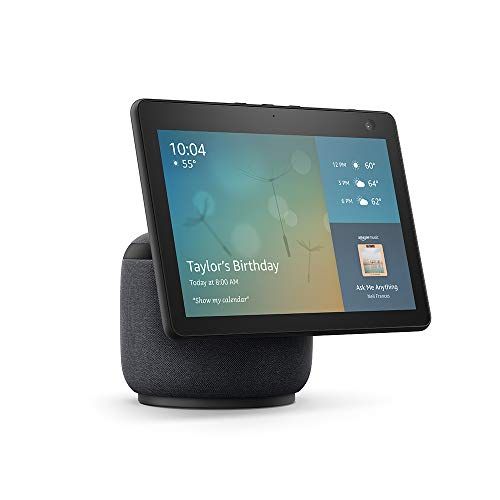
Amazon Echo Show 10
A smart device that can be used for just about everything from relaxation to video calls.
If Astro had a real voice of its own rather than simple sound effects and was able to respond directly instead of Alexa, it would go a long way to establishing more of a distinct personality.
I often start the day with an "Astro, good morning," to run Alexa's morning routine of weather and news that I set and to get Astro moving about. I end the day with "Astro, goodnight," so it knows to be quiet and go back on its charger until morning or otherwise woken. Of course, it will also go to its charger on its own at night if you have sleep and wake times set.
The built-in speakers sound great with excellent clarity and powerful bass, which you can literally feel through the floor. I'd argue that Astro features among the best Alexa-powered speakers available. When doing a two-way video conference, the overall microphone and video quality were similar to devices like the Echo Show 10.
Finally, as with other Alexa-powered devices, note that interactions were not always successful for me and integrations didn't always work, sometimes requiring an app reboot or some other reset. It's important to remember that as a Day 1 Edition in particular, Astro is not going to be without its quirks and outright bugs.
Security System Integration: All in on Ring Protect Pro
In a home like mine with Echos of one form or another in every room and a Ring security system with motion sensors and cameras, I already get most of what this robot offers. While you can use Astro as your sole Ring security device, it really does limit the effectiveness of what should be a well-distributed web of security devices.
If you don't already have Ring Protect Pro, it comes with a six-month trial that begins automatically once you link your Amazon and Ring accounts and add your Astro device to the Ring app (available for iPhone and Android). Existing Ring users receive an equivalent credit. At $20 per month, the 6-month trial is worth $120, although you can pre-pay for the year at $200 to lower the monthly cost.
Since I already had the service, I just had to search for Alexa-enabled Devices in the Ring app to add Astro. I was then able to say things like "Astro, go on patrol," and it'd set my entire Ring security system to begin the countdown for Away mode. When I return, I can then say "Astro, stop monitoring," and it will say "Welcome home," and ask for my four-digit security code, which is the same one I enter on the Ring control panel.
I've had instances before Astro when I've been out of the house and wanted to investigate what was going on in a particular room or what our two dogs were up to. I've had limited success using Echos for this same function due to their stationary screens. In this specific regard, the mobility and multiple cameras of the Astro are a big plus.
One particularly nice feature of the Amazon Astro app that extends beyond what you can do in the Ring app is being able to set what are called Viewpoints. For instance, I set both "Front Door" and "Oven" viewpoints that automatically send Astro to either location to check if the front door was left open or the oven was on, respectively. This capability is further enhanced by Astro's extensible periscope camera, which can give it a view of just about anything. Of course, you can simply remotely drive Astro to anywhere you want to check out, but setting a Viewpoint saves a lot of time and effort.
If you choose not to continue the Ring Pro subscription after the six-month free trial, you only get access to a subset of features. This includes being able to access a live view from the Astro app, controlling Astro remotely, enabling two-way talk, and getting alerts when an unrecognized person is detected. The second part of this subset includes using Alexa Guard with Astro to get smart alerts for smoke, CO dangers, and glass break sounds, as well as automatically controlling smart lights.
Otherwise, all other features, like accessing Ring video history, scheduling autonomous patrols, saving videos in cloud storage, sounding a siren when activity is detected inside, and more all require an active subscription.
As a mobile Echo and security drone, Astro has clear value, particularly if you're already in the Alexa and Ring ecosystems. Of course, at $999.99, or $1499.99 at Astro's general release, you can instead outfit every room with an Echo and Ring security equipment, including cameras, and likely still have plenty of money left over.
Battery Life and Charging: Short Bursts of Activity
Battery life is perhaps the feature that's least ready for primetime with Astro. It needs to go back to its charger many times a day. Astro can hit 50% battery when not doing much at all, including just idling for less than an hour.
On its charger, it can go from 50% to 100% in about 20 minutes and then go back to its regular activities. Again, this stop-and-go pattern of activity and ready availability does little to help Astro's case against simply placing more Echo Show devices around your home.
Should You Buy the Amazon Astro?
My wife and two oldest daughters haven't exactly liked having the Amazon Astro around. I'm the technophile in the family, so I don't mind a slightly creepy autonomous robot who hoots and howls on occasion in various rooms. My youngest daughter, on the other hand, actually enjoys having the robot around and often engages with it like she does any Alexa-based device, although her interest too has waned after the first several weeks of ownership. In fact, there were days when I even told the robot "Astro, goodnight" first thing in the morning so it wouldn't go puttering around the house all day and bother me or anyone else.
Overall, I like where Amazon is headed with the Astro, and the company has certainly promised improvements for the future, including detecting activity from your dogs or cats and knowing when your doors or windows are open. Unfortunately, this initial version of the robot has too few use cases to justify its $999.99 price point, particularly if you don't already have a Ring security system in place. Right now, outside of people who want to expand their Ring security system capabilities, it's just a fun novelty for early adopters with deep pockets, especially since the wide-release price is expected to rise to $1,499.99.
It's interesting that Amazon's own advertising for Astro focuses on the same type of tropes we've had since the first big, and failed, personal robotics push from the early 1980s, right down to delivering a frosty beverage. Of course, by the time you hand Astro the bottle and tell it who to find, you could have simply delivered it yourself. This is a perfect example of the sum of Astro being little more than a series of party tricks rather than something more substantive, at least beyond its security features.
Hopefully, Astro doesn't go the way of the Amazon Glow, a fun experiment with a high enough cost and too few essential uses to catch on.
While we may eventually look back at the Amazon Astro as the true beginning of the personal robotics era, it's fair to say that, at least for now, we still have a long way to go to justify its existence.

